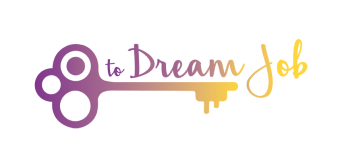
Whether you’re looking for a new direction or trying to achieve a certain career goal in your profession, it is difficult to stay motivated, inspired and committed when suffering from stress. Luckily, psychologists have developed a number of imagery exercises to help people reduce stress effectively.
I am about to share 3 simple imagery techniques that you may enjoy checking out:
1. Coping imagery
Mr Stephen Palmer and Gary Cooper claim this method as probably one of the most effective stress-management technique to help people deal with difficult situations or potential stress scenarios.
According to their book How to deal with stress, you can visualise a situation that you find stressful but by imagining that you are coping with the feared situation you will directly challenge your negative or catastrophic imagery that may be upsetting you. This method enables you to accept that that you may not be able to give that perfect presentation, make no errors at an important job interview. What it does instead is helping you to build your confidence using a type of rehearsal imagery.
This technique is helpful in situations like experiencing the fear of losing your job due to underperforming or experiencing discomfort and stress before a job interview.
2. Self-motivation imagery
Is used to help people inspire themselves to action in the area they need a quick start. It was developed by Mr Palmer and Neenan as a reaction to their patients worrying that they would not be able to cope with the stress created.
Motivation imagery is focused firstly on visualising spending the rest of your life not doing what you want to do, and secondly visualising doing what you want to do. This method is effective in an area where you need a good kick off – you can use it to inspire yourself to start looking for a new job if you feel overly unhappy in your current one, to re-start your job search or learning a new skill needed to improve your performance at work.
3. Staying-focused imagery
When attempting to handle stress and maximise performance, it is important to see further than the current crises that may be occurring. This type of imagery, also known as goal-focused imagery, is a technique that helps people to stay focused on their goals on a daily basis. Creating your short-term and long-terms goals is beneficial to finding your direction, staying on track and moving forward. In this exercise, you will develop an associated image or picture that will remind of each of your goals.
Creating your short-term and long-terms goals is beneficial to finding your direction, staying on track and moving forward. In this exercise, you will develop an associated image or picture that will remind of each of your goals.
 You may recognise that creating a vision board is currently a very popular and simple form of staying-focused imagery techniques. My clients, especially those who work in the world of corporate business and have to deal with intense and strict performance deadlines, often find this exercise very enjoyable and complimentary to help them balance stress at work and bring a little bit more creativity to their work routine.
You may recognise that creating a vision board is currently a very popular and simple form of staying-focused imagery techniques. My clients, especially those who work in the world of corporate business and have to deal with intense and strict performance deadlines, often find this exercise very enjoyable and complimentary to help them balance stress at work and bring a little bit more creativity to their work routine.
If you find these techniques interesting and helpful, you can read more in the book published by Stephen Palmer and Cary Cooper, How to deal with Stress. Creating success.
If you would love to find out more and work on a stress-related matter or achieving your personal goal under my supervision and guidance, feel free to contact me to arrange a 30 min free discovery call.
Testimonial:
“Through her insight and gentle probing, Adriana was able to help me make a huge personal discovery that was hidden from my sight for years. The discovery has lead me to completely re-evaluate my priorities in life and create space for the things that are most important to me. All this in only one 1/2 hour session. Just imagine what you can create for your self on one of her longer programs!“
Katherine, London

Comments
love the practical ideas, Adri Ana . Fab!